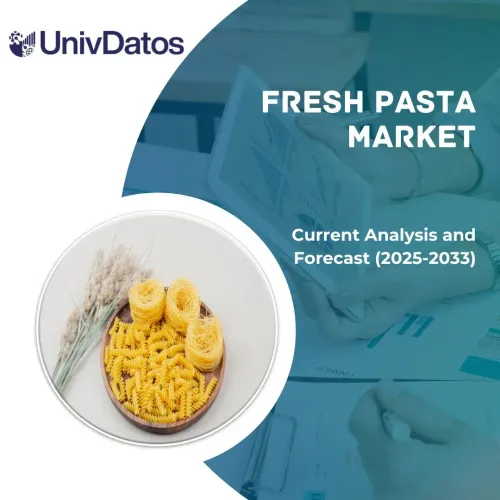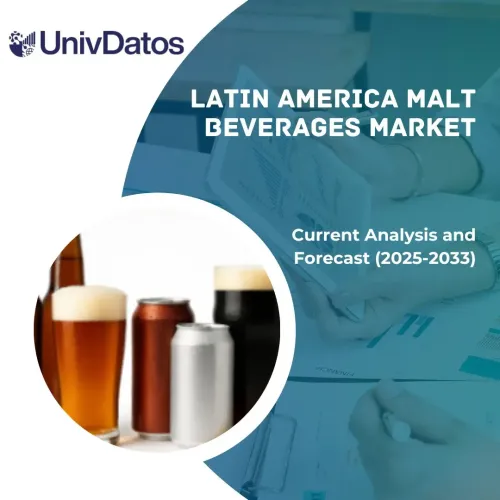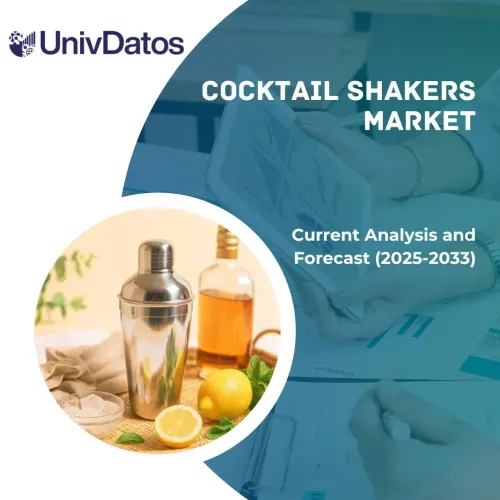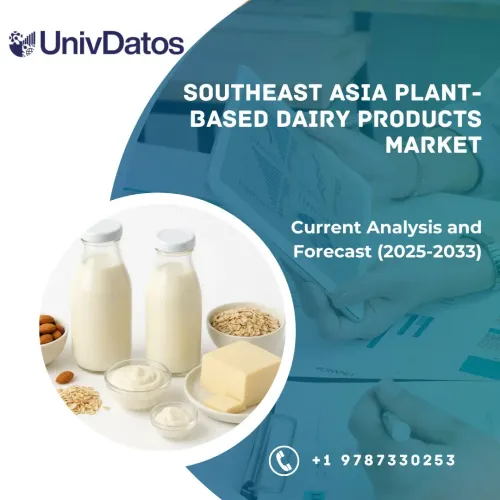- Home
- About Us
- Industry
- Services
- Reading
- Contact Us
Plant-Based Food Market: Current Analysis and Forecast (2024-2032)
Emphasis on By Product (Plant-Based Dairy & Dairy Alternative, Plant-Based Nutrition, Plant-Based Meat Substitutes); By Application (Supplements & Nutritional Powders, Beverages, Bakery & Snacks, Breakfast Cereals, Infant Nutrition, and Others); By Source (Soy, Pea, Wheat, Others); Region/Country
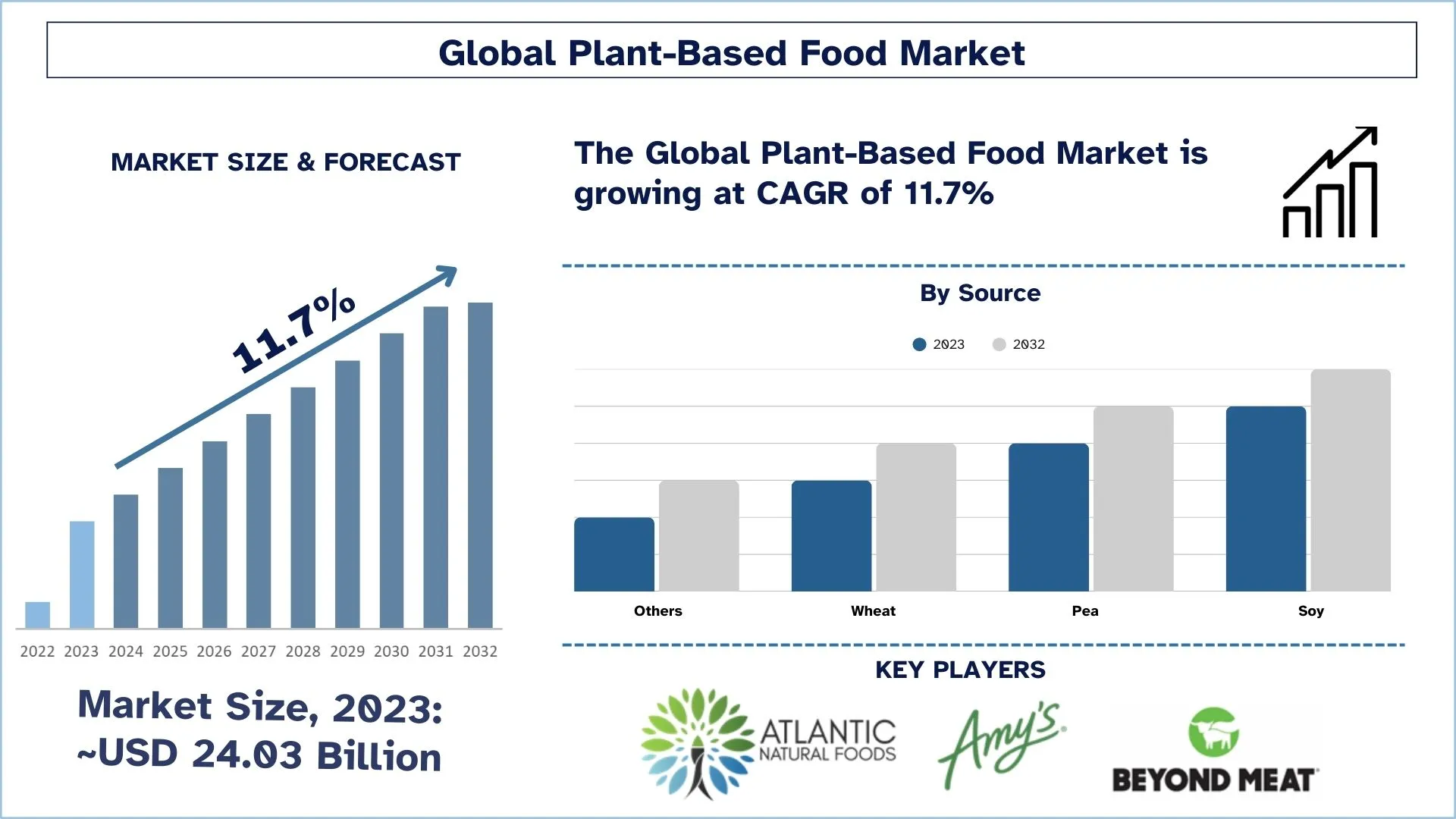
Plant-Based Food Market Size & Forecast
The Plant-Based Food Market was valued at USD 24.03 billion in 2023 and is expected to grow at a robust CAGR of around 11.7% during the forecast period (2024-2032).
Plant-Based Food Market Analysis
The global meat and dairy sector is currently going through an unprecedented level of competition and disruption, driven by the growth of viable plant-based alternatives across many categories. People are reducing or eliminating animal products from their diet for a variety of reasons. Some want to cut back on cholesterol, others may be concerned about animal welfare, and some tend to worry about the effect of animal agriculture on the environment. Whatever the reason may be, consumers globally are shifting to a plant-based food diet. There is a seismic shift occurring in eating habits, creating a significant market opportunity for plant-based foods. Most importantly, many kinds of research reveal that for consumers, consuming plant-based foods has moved beyond experimentation into a permanent change brought on by health, lifestyle, and social factors. Thus, the following are market dynamics that discuss the plant-based food product aspects in the market.
Plant-Based Food Market Trends
This section discusses the key market trends that are influencing the various segments of the Plant-Based Food market, as identified by our team of research experts.
Rise Of Whole-Food Plant-Based Alternatives
Another one of the most crucial tendencies in the global plant-based food industry is the demand for whole and whole-food plant-based products over some processed ones. Customers are increasingly preferring food products with natural substances such as legumes, nuts and vegetables as opposed to highly processed plant-source based meat and milk products. This change is forcing the brands to prepare products with minimal additives, enhanced nutritional values as well as increased clarity. Thus, new products based on minimally processed plant foods, including plant-based meats from mushrooms, plant-based dairy from chickpeas, and fermented plant proteins, are developing globally.
Plant-Based Food Industry Segmentation
This section provides an analysis of the key trends in each segment of the global Plant-Based Food market report, along with forecasts at the global, regional, and country levels for 2024-2032.
The Plant-Based Dairy & Dairy Alternative Market Dominates the Plant-Based Food Market.
Based on the product, the plant-based food market is segmented into plant-based dairy & dairy alternatives, plant-based nutrition, and plant-based meat substitutes. The plant-based dairy & dairy alternative segment caters to a significant market share. Plant-based dairy alternatives such as almond milk and oat milk demand are growing among consumers owing to their texture, which is thicker and creamier than other plant-based products, making them suitable for both beverages and food products. In addition, consumers with lactose intolerance are also adopting plant-based dairy products such as animal-free yoghurts, desserts, and cheese, coupled with a growing number of launches of blended milk products, bringing new nutritional profiles, tastes, and textures for toddlers are also driving the market size of plant-based food. For instance, on 5 July 2022, Danone announced the launch of the first-ever Dairy and Plants Blend baby formula, for vegetarian and flexitarian options for babies.
The Soy Segment holds the Largest Share of the Plant-Based Food Market.
Based on the source, the plant-based food market is segmented into soy, pea, wheat, and others. The soy segment acquired the highest share in the plant-based food market. Soy and soy foods are common nutritional solutions for vegetarians, due to their high protein content and versatility in the production of meat analogs and milk substitutes. Further, soy is valuable for plant-based products as it is rich in protein and contains unsaturated fat, iron, and vitamin B1. Also, various key players are launching 100% soy snacks and beverages in the plant-based food market, which in turn would create opportunities in the market. For instance, in March 2022, Otsuka Pharmaceutical Co., Ltd. (Otsuka) announced the launch of SOYJOY Plant-Based, a new series in the SOYJOY line of delicious, convenient whole-soy nutrition bars in two flavors (white chocolate and banana), nationwide in Japan.
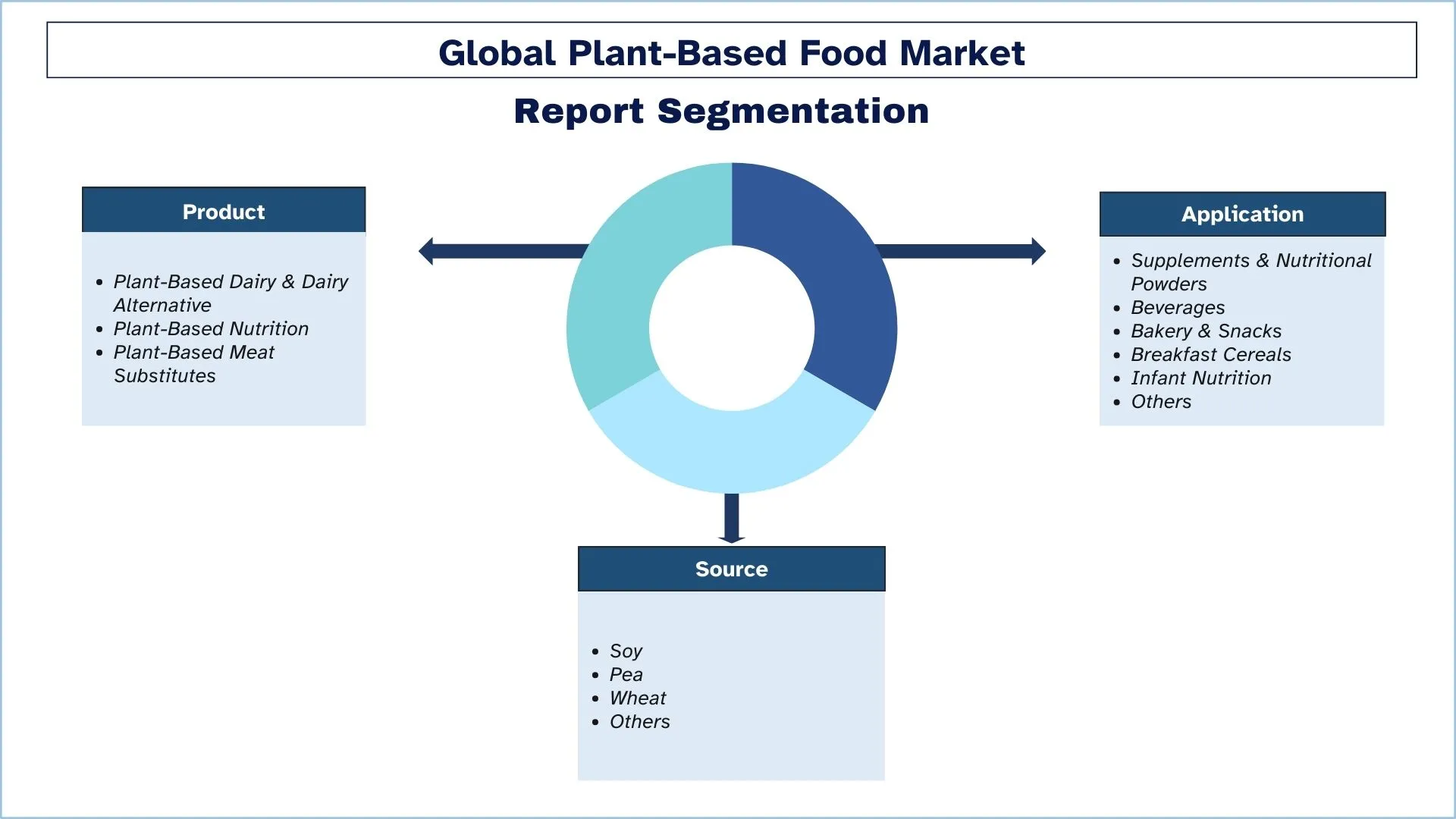
North America is expected to grow with a Significant CAGR during the Forecast Period.
North America is anticipated to grow at a substantial CAGR during the forecast period. This is mainly attributed to the growing consumer acceptance of plant-based food items because the development and popularity of novel products such as egg substitutes, plant-based milk, and plant-based meat substitutes are accentuating the market size of plant-based foods in the region. In addition, the rising vegan and flexitarian population in the U.S. and the strong presence of leading plant-based food manufacturing companies are driving market growth. For instance, according to a study done by Vegetarian Times, 9.7 million Americans follow a vegetarian diet, with almost one million of those being vegan. 59% of plant-based food eaters in the United States are female, with 41% being male.
U.S. Dominates the North American Plant-Based Food Market:
The market for plant-based foods in the United States has developed courageously, which has been influenced by a growing number of customers who are concerned about their health, the environment, and ethical concerns. Due to increased change in diet, emphasizing flexitarian and plant-based diets, manufacturers are focusing on improving the palatability, texture, and nutritional quality of plant-based products imitating meats, dairy, and sea foods. This is because eating plant-based products is becoming popular, and the retailers and restaurant industries are coming up with more products in the market to meet this need. However, certain sections, such as plant-based meats, have had some setbacks, but the demand for substitution continues to rise since people are looking for better and more versatile protein sources.
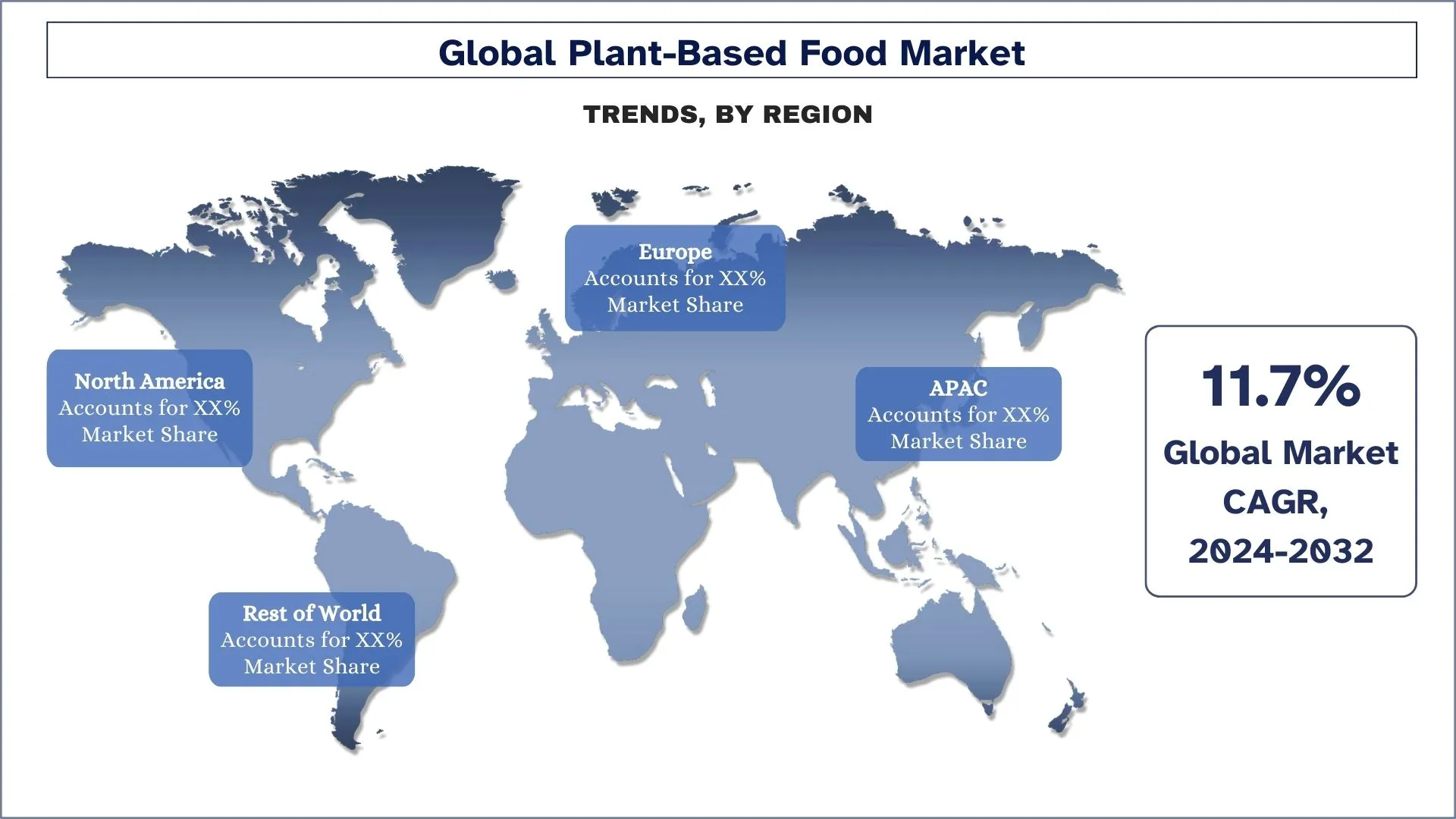
Plant-Based Food Industry Overview
The Plant-Based Food market is competitive and fragmented, with several global and international market players. The key players are adopting different growth strategies to enhance their market presence, such as partnerships, agreements, collaborations, new product launches, geographical expansions, and mergers and acquisitions. Some of the major players operating in the market are Amy’s Kitchen Inc.; Atlantic Natural Foods LLC; Beyond Meat Inc.; Danone SA; Garden Protein International Inc. (Pinnacle Foods Inc.); Impossible Foods Inc.; Light life Foods Inc. (Maple Leaf Foods Inc.); Nestle S.A.; Tyson Foods Inc.; V bite Food Ltd.
Recent Developments in the Plant-Based Food Market
In September 2022, the Better Food Foundation (U.S.) launched its canned vegan meat in the US, along with other products such as cold cuts, patties, and meatballs.
In October 2021, Nestlé S.A. (Switzerland) launched Garden Gourmet vEGGie, a plant-based alternative to eggs, and Garden Gourmet Vrimp, a plant-based alternative to shrimp.
In July 2021, Beyond Meat (U.S.) launched Beyond Meatballs in the Netherlands and Switzerland. These meatballs are available at 450 Albert Heijn stores throughout the Netherlands and purchased through the online supermarket Picnic. In Switzerland, Beyond Meatballs are found across 120 COOP stores.
Plant-Based Food Market Report Coverage
Report Attribute | Details |
Base year | 2023 |
Forecast period | 2024-2032 |
Growth momentum | Accelerate at a CAGR of 11.7% |
Market size 2023 | USD 24.03 Billion |
Regional analysis | North America, Europe, APAC, Rest of the World |
Major contributing region | North America holds significant growth in the market. |
Key countries covered | U.S., Canada, Germany, United Kingdom, Spain, Italy, France, China, Japan, and India |
Companies profiled | Amy’s Kitchen Inc.; Atlantic Natural Foods LLC; Beyond Meat Inc.; Danone SA; Garden Protein International Inc. (Pinnacle Foods Inc.); Impossible Foods Inc.; Light life Foods Inc. (Maple Leaf Foods Inc.); Nestle S.A.; Tyson Foods Inc.; V bite Food Ltd. |
Report Scope | Market Trends, Drivers, and Restraints; Revenue Estimation and Forecast; Segmentation Analysis; Demand and Supply Side Analysis; Competitive Landscape; Company Profiling |
Segments Covered | By Product, By Application, By Source, Region/Country |
Reasons to Buy the Plant-Based Food Market Report:
The study includes market sizing and forecasting analysis validated by authenticated key industry experts.
The report briefly reviews overall industry performance at a glance.
The report covers an in-depth analysis of prominent industry peers with a primary focus on key business financials, product portfolios, expansion strategies, and recent developments.
Detailed examination of drivers, restraints, key trends, and opportunities prevailing in the industry.
The study comprehensively covers the market across different segments.
Deep dive regional-level analysis of the industry.
Customization Options:
The global plant-based food market can further be customized as per the requirements or any other market segment. Besides this, UnivDatos understands that you may have your own business needs; hence, feel free to contact us to get a report that completely suits your requirements.
Table of Content
Research Methodology for the Plant-Based Food Market Analysis (2024-2032)
We analyzed the historical market, estimated the current market, and forecasted the future market of the global Plant-Based Food market to assess its application in major regions worldwide. We conducted exhaustive secondary research to gather historical market data and estimate the current market size. To validate these insights, we carefully reviewed numerous findings and assumptions. Additionally, we conducted in-depth primary interviews with industry experts across the Plant-Based Food value chain. After validating market figures through these interviews, we used top-down and bottom-up approaches to forecast the overall market size. We then employed market breakdown and data triangulation methods to estimate and analyze the market size of industry segments and sub-segments.
Market Engineering
We employed data triangulation techniques to finalize the overall market estimation and derive precise statistical numbers for each segment and sub-segment of the global Plant-Based Food market. We split the data into several segments and sub-segments by analyzing various parameters and trends, including product, application, source, and regions within the global Plant-Based Food market.
The main objective of the Global Plant-Based Food Market Study.
The study identifies current and future trends in the global Plant-Based Food market, providing strategic insights for investors. It highlights regional market attractiveness, enabling industry participants to tap into untapped markets and gain a first-mover advantage. Other quantitative goals of the studies include:
Market Size Analysis: Assess the current and forecast market size of the global Plant-Based Food market and its segments in terms of value (USD).
Plant-Based Food Market Segmentation: The study segments the market by product, application, source, and region.
Regulatory Framework & Value Chain Analysis: Examine the regulatory framework, value chain, customer behavior, and competitive landscape of the Plant-Based Food industry.
Regional Analysis: Conduct detailed regional analysis for key areas such as Asia Pacific, Europe, North America, and the Rest of the World.
Company Profiles & Growth Strategies: Company profiles of the Plant-Based Food market and the growth strategies adopted by the market leaders to sustain the fast-growing market.
Frequently Asked Questions FAQs
Q1: What is the plant-based food market's current market size and growth potential?
The global Plant-Based Food (AEB) market was valued at USD 24.03 billion in 2023 and is projected to grow at a CAGR of 11.7% (2024-2032F).
Q2: What are the driving factors for the growth of the plant-based food market?
The plant-based food industry is growing due to advancements in food technology, rising health awareness, and increasing sustainability concerns. Innovations in plant-based proteins, fermentation, and cellular agriculture are making products tastier, more nutritious, and closer in texture to animal-based foods, driving broader adoption.
Q3: Which segment has the largest plant-based food market share by source type?
Soy-based products hold the largest share of the plant-based food market, thanks to their high protein content, versatility, and widespread use in plant-based meat, dairy, and functional food products.
Q4: What are the emerging technologies and trends in the plant-based food market?
Consumers are shifting toward minimally processed, plant-based options made from natural ingredients like legumes, nuts, and vegetables, pushing brands to develop cleaner, more transparent products.
Q5: Which regions dominate the Plant-Based Food market?
The North America region is expected to dominate the market during the forecast period.
Q6. What are the biggest challenges in the global plant-based food market?
The industry faces challenges such as high production costs, supply chain constraints, and consumer skepticism toward processed alternatives. Developing cost-effective, high-quality products while maintaining taste, texture, and nutritional value remains a key hurdle for businesses.
Q7: Who are the key players in the global Plant-Based Food market?
• Amy’s Kitchen Inc.
• Atlantic Natural Foods LLC
• Beyond Meat Inc.
• Danone SA
• Garden Protein International Inc. (Pinnacle Foods Inc.)
• Impossible Foods Inc.
• Light Life Foods Inc. (Maple Leaf Foods Inc.)
• Nestle S.A.
• Tyson Foods Inc.
• V bite Food Ltd.
Q8: What drives growth and challenges in the plant-based food market?
The market is expanding due to rising consumer health awareness, sustainability concerns, and technological advancements. However, challenges such as high production costs, supply chain disruptions, and consumer acceptance of new plant-based formulations need to be addressed for continued growth.
Q9: How can companies stay competitive in plant-based foods?
To maintain a competitive edge, companies should focus on R&D, strategic partnerships, clean-label innovation, and sustainability efforts. Expanding into new markets, improving distribution channels, and aligning with consumer preferences for healthier, minimally processed options can help drive long-term success.
Related Reports
Customers who bought this item also bought

